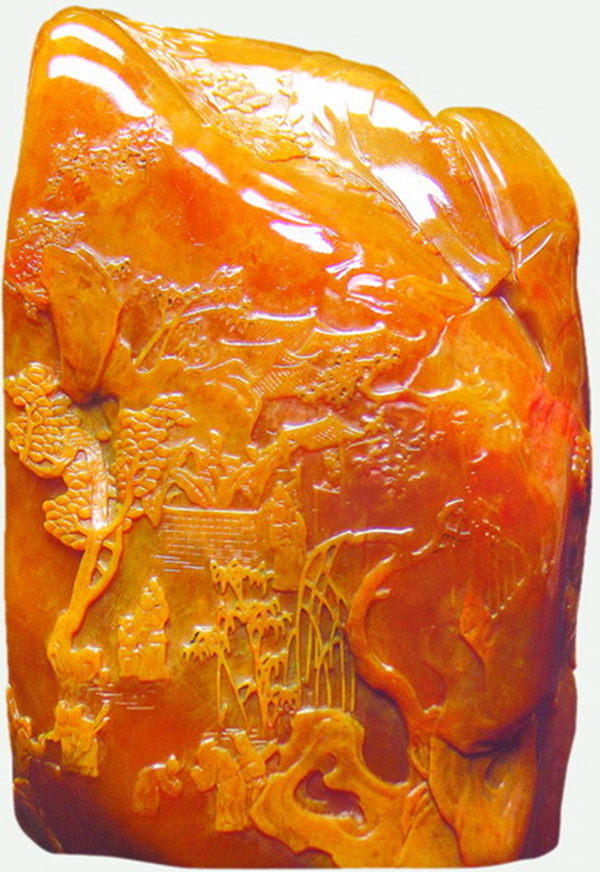
A Shoushan stone carving work. [Photo/fujian-szwhg.chaoxing.com]
Shoushan stone carving, primarily practiced in Fuzhou, Fujian province, traces its origins to the Southern Song Dynasty (1127-1279), when Shoushan stone quarries were first mined. Over subsequent dynasties — the Yuan, Ming, and Qing (1271-1911) — it evolved into a distinct artistic industry. Recognized for its cultural significance, this craft was among the first entries on the national list of intangible cultural heritage under the traditional arts category.
Shoushan stone carving utilizes raw materials extracted from the mountainous regions of Beifeng in Jin'an district, Fuzhou. This art form employs a rich array of techniques, having progressively incorporated the artistic essence of traditional Chinese painting and various folk carving crafts throughout its development. The primary techniques include circular carving, seal engraving, miniature sculpting, and more.
As one of Fuzhou's "three treasures" of folk art, Shoushan stone carving boasts a history of over 4,000 years. During the Ming and Qing dynasties (1368-1911), these carvings became prized tributes to the imperial court and coveted export commodities.
Today, they enjoy global renown, with many pieces gracing museum collections worldwide. The Palace Museum in Beijing houses merely 2,000 Shoushan stone works among its 1.8 million artifacts — a testament to their rarity. This art form holds profound cultural, artistic, and socio-economic significance.

Copyright © General Office of Fujian Provincial People's Government
Website Identification Code 3500000049Registration Number: 15003084
All rights reserved. The content (including but not limited to text, photo, multimedia information, etc) published in this site belongs to fujian.gov.cn.
Without written authorization from fujian.gov.cn, such content shall not be republished or used in any form.